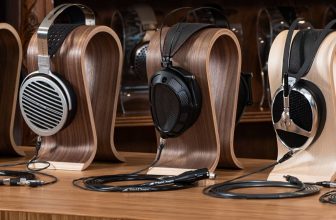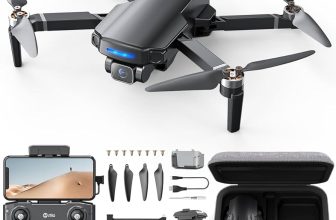Wireless Router for Home Wifi: Turbo-charge Your Internet Speed

A wireless router for home wifi provides internet access wirelessly within your household. It ensures seamless connectivity for your devices.
In today’s digital age, having a reliable wireless router is crucial for staying connected and productive. With multiple devices accessing the internet simultaneously, a high-quality wireless router can enhance your online experience. Whether you’re streaming content, working from home, or simply browsing the web, a fast and secure wifi connection is essential.
Choosing the right wireless router can improve your network speed, coverage, and overall performance. In this guide, we will explore the key features to look for in a wireless router to optimize your home wifi setup.

How Wireless Routers Work
`Wireless routers play a crucial role in providing internet connectivity within our homes. Understanding how these devices function can help us optimize our home Wi-Fi network for better performance.
`transmission Of Data`
`Data transmission occurs between the wireless router and connected devices, allowing for seamless internet browsing, streaming, and online activities.
`frequency Bands`
`Wireless routers operate on specific frequency bands such as 2.4GHz and 5GHz, dictating the speed and range of Wi-Fi connections within our homes.

Choosing The Right Wireless Router
When it comes to setting up a reliable home WiFi network, choosing the right wireless router is crucial. Speed and performance, range and coverage, as well as security features are key factors to consider.
Speed And Performance-Wireless Router for Home Wifi
- Look for routers with the latest Wi-Fi standards like 802.11ac for fast speeds.
- Dual-band routers offer better performance for streaming and gaming.
- Consider routers with multiple antennas for wider coverage and stability.
Range And Coverage-Wireless Router for Home Wifi
- Check if the router has beamforming technology for directing signals towards devices.
- Mesh routers are great for larger homes as they provide seamless coverage throughout.
- External antennas can boost signal strength and extend coverage.
Security Features
- Ensure the router offers features like WPA3 encryption for secure connections.
- Look for routers with firewall protection and intrusion prevention features.
- Guest network capabilities can keep your main network secure while allowing visitors access.
Setting Up Your Wireless Router
Setting up your wireless router is the first step in establishing a reliable and fast home Wi-Fi network. A properly configured and positioned router can ensure optimal coverage and performance, allowing you to make the most of your internet connection.
Placement And Positioning
Choosing the right location for your wireless router is crucial for maximizing its coverage and performance. Consider the following factors when deciding on the placement:
- Central Location: Position the router in a central area of your home to ensure even coverage throughout.
- Elevated Position: Place the router at a higher elevation, such as on a shelf or desk, to minimize obstructions and improve signal strength.
- Avoid Interference: Keep the router away from appliances, metal objects, and other electronic devices that could interfere with the signal.
Network Configuration
Configuring your wireless router’s network settings is essential for optimizing performance and ensuring security. Follow these steps to set up your wireless network:
- Access the Router Interface: Enter the router’s IP address into a web browser and log in using the default credentials provided by the manufacturer.
- Change Default SSID and Password: Customize the network name (SSID) and create a strong password to secure your Wi-Fi network from unauthorized access.
- Enable Security Features: Activate WPA or WPA2 encryption to safeguard your network from unauthorized users.
- Update Firmware: Regularly check for firmware updates and install them to keep your router’s software up to date.
Troubleshooting Common Issues
Every home wifi network requires a reliable wireless router to connect multiple devices and provide seamless internet access. However, even the best routers can occasionally encounter common issues that can disrupt your internet experience. In this section, we will discuss some of these problems and provide troubleshooting solutions to help you get back online in no time.
Interference Problems
Interference can be a major cause of wifi connectivity issues. This occurs when other devices or physical objects disrupt the wireless signal traveling between your router and the connected devices. Here are some common sources of interference:
- Microwave ovens
- Cordless phones
- Bluetooth devices
- Walls and thick furniture
To minimize interference, ensure that your router is placed away from these devices and objects. Additionally, you can try changing the wifi channel on the router’s settings page to avoid overlapping with neighboring networks.
Slow Connection
A sluggish internet connection can be frustrating, especially when you’re trying to stream videos or play online games. This may be caused by several factors:
- Distance from the router: The farther you are from the router, the weaker the signal strength and the slower the connection speed.
- Heavy network traffic: If multiple devices are using the internet simultaneously, it can overload the router and result in slower speeds.
- Outdated router firmware: Router manufacturers often release firmware updates to improve performance and fix bugs. Make sure your router’s firmware is up to date.
To address these slow connection issues, try the following steps:
- Reposition the router to a more central location in your home to improve signal strength.
- Limit the number of devices connected to the network to reduce network traffic.
- Regularly check for firmware updates on the router’s settings page and install them if available.
By addressing interference problems and optimizing your router’s settings, you can improve the performance of your home wifi network and enjoy smooth, uninterrupted internet access.
Future Of Wireless Router Technology
The future of wireless router technology for home wifi is focused on faster speeds, broader coverage, and enhanced security features. With the increasing number of connected devices in households, the demand for smart and efficient routers is driving innovations such as mesh network systems and advanced parental controls, ensuring seamless connectivity and improved user experience.
Mesh Networking
Wireless router technology has evolved significantly in recent years, and one of the most important advancements is the introduction of mesh networking. Unlike traditional routers that rely on a single device to transmit Wi-Fi signals, mesh networks use multiple access points spread throughout a home to create a seamless internet experience. With mesh networking, you no longer have to worry about dead zones or weak signals in certain areas of your house. Instead, the system intelligently routes your data through the strongest and fastest connection, ensuring that you have fast and reliable internet access wherever you are in your home. Mesh networking is truly the future of home Wi-Fi.
5g Integration
Another exciting development in wireless router technology is the integration of 5G connectivity. As we enter the era of 5G, the fifth generation of mobile networks, our wireless routers are becoming more powerful and capable than ever before. With 5G integration, your home Wi-Fi will be able to deliver lightning-fast speeds and low-latency connections, making it possible to stream high-definition videos, play online games, and download files in a matter of seconds. This technology will revolutionize how we use the internet at home, providing us with a seamless and ultra-fast online experience.
In addition to speed, 5G integration also brings increased capacity and efficiency to wireless routers. With more devices connecting to the internet than ever before, the current Wi-Fi standards can sometimes struggle to handle the bandwidth demands. However, with 5G integration, your home Wi-Fi network will be able to support a greater number of devices simultaneously without sacrificing performance. Whether you have multiple smartphones, tablets, smart TVs, or IoT devices, your wireless router will be able to handle the load effortlessly, ensuring that all your devices stay connected and work smoothly.
In conclusion, the future of wireless router technology is indeed promising. With advancements like mesh networking and 5G integration, we can expect faster speeds, wider coverage, and better performance from our home Wi-Fi networks. Whether you are streaming your favorite TV shows, working from home, or connecting your smart devices, the latest wireless routers will provide the seamless connectivity you need. Stay ahead of the curve and embrace the future of home Wi-Fi technology.

Frequently Asked Questions Of Wireless Router For Home Wifi
Which Wireless Router Is Best For Home Use?
The best wireless router for home use depends on your specific needs and budget. Some top options include the TP-Link Archer A7, NETGEAR Nighthawk AC1750, and ASUS RT-AC68U. Consider factors like speed, coverage, and number of devices supported to make the right choice.
How Do I Set Up A Wireless Router For Home Wifi?
To set up a wireless router for home wifi, follow these steps:
1. Connect the router to your modem using an Ethernet cable. 2. Power on both the modem and the router. 3. Open a web browser and enter the router’s IP address. 4. Login with the default credentials provided by the manufacturer. 5. Follow the on-screen instructions to configure the wireless settings and secure your network.
What Is The Range Of A Typical Home Wifi Router?
The range of a typical home wifi router can vary depending on factors like the model, antenna design, and signal interference. Generally, most routers have a range of around 100-150 feet indoors. However, obstacles like walls and interference from other devices can significantly reduce the effective range.
How Many Devices Can A Home Wifi Router Support?
The number of devices a home wifi router can support depends on its specifications. Entry-level routers may handle around 20-30 devices, while high-end routers can handle over 50 devices simultaneously. Consider the number of devices in your household and the router’s specifications when making a choice.
Conclusion
Choosing the right wireless router is crucial for a seamless home WiFi experience. It’s essential to consider your home’s size, internet speed, and the number of connected devices. A reliable and secure router can enhance your online activities while providing coverage for all areas of your home.
By following these tips, you can make an informed decision and enjoy a faster, more reliable WiFi connection.






